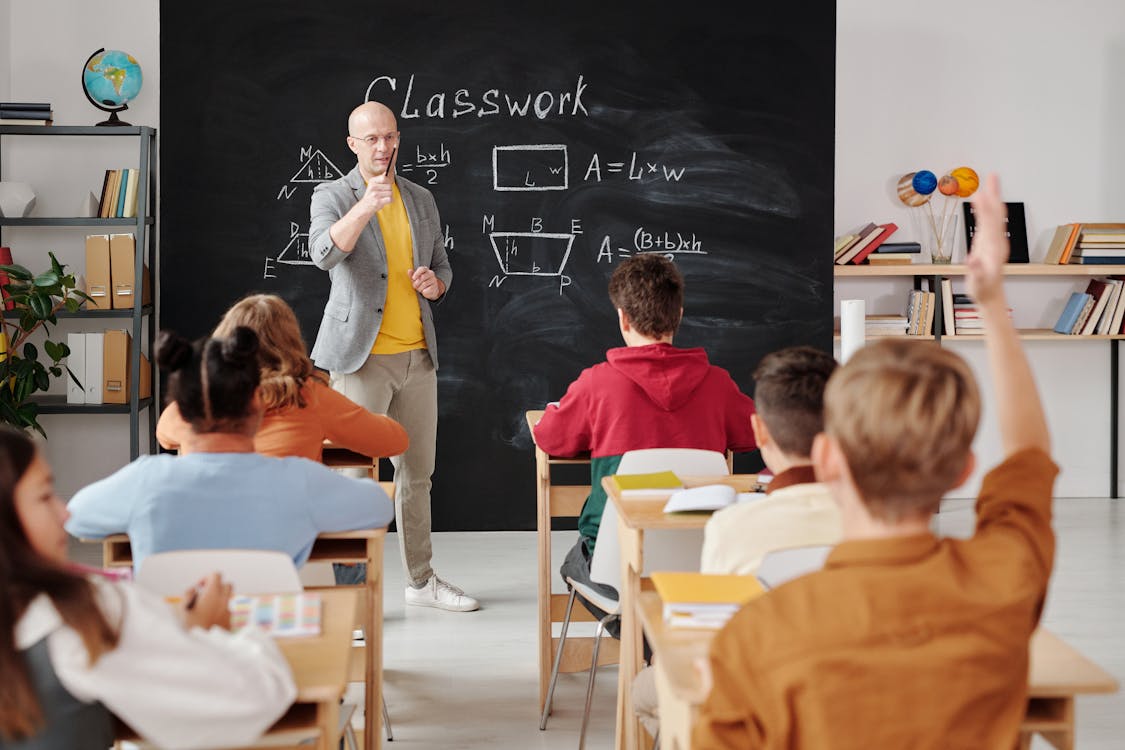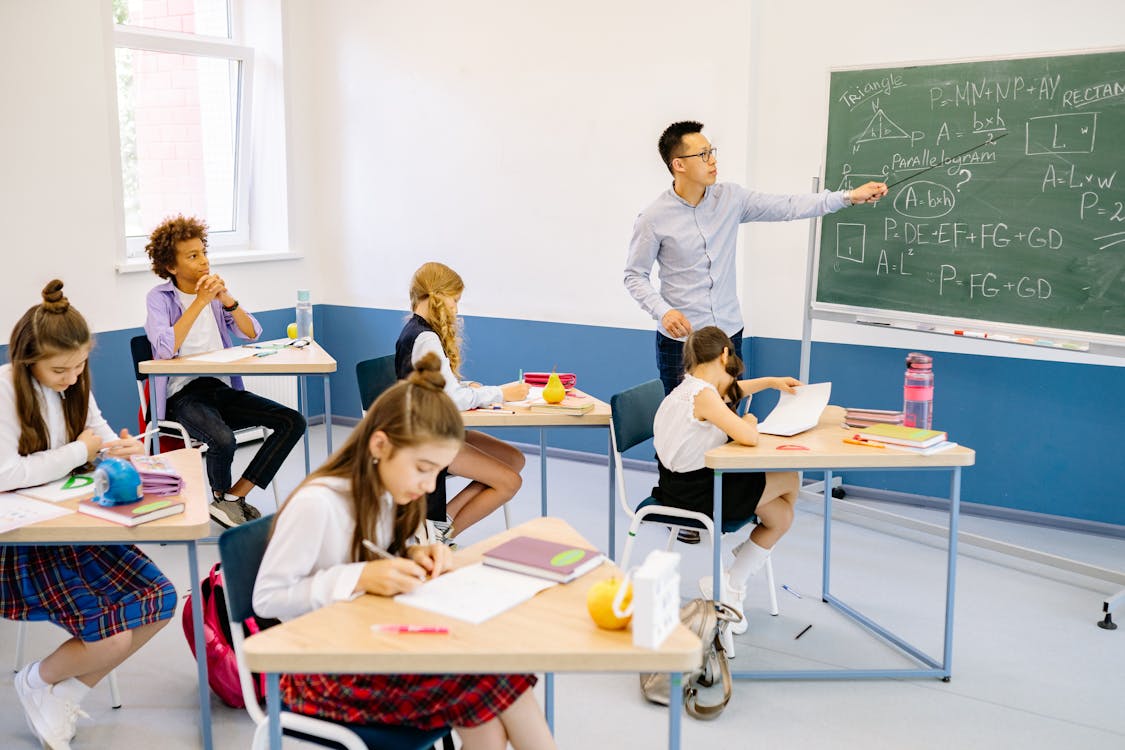University of Maryland College of Education faculty are addressing some of these critical issues through their research and teaching. They are helping to shape the future of our community and nation.
Education Reform
The United States Department of Education (DOE) plays a critical role in the formation of national educational policy. While most of the regulatory work for schools is left to state and local governments, the federal government can play a pivotal role in determining national policies related to school curriculum, testing standards, and funding.The President and Vice President have made a significant investment in education reform.
Through the America Reads initiative, more than 1100 colleges have committed Work Study students to tutor children in reading; and national service programs like AmeriCorps and VISTA have trained more than 2 million children in the skills they need to succeed in school.
In addition, under the Goals 2000 plans, 49 states plus the District of Columbia and Puerto Rico have set higher academic standards for public schools. This has helped increase the percentage of students who are graduating from high school and preparing for college and career opportunities.
Through the 21st Century Community Learning Centers program, President Clinton and Vice President Gore have helped 675,000 school-age children in rural and urban communities stay in public schools longer by providing safe and educational after-school programs. In addition, the President and Vice President have doubled the total amount of funding for after-school programs in just one year -- a $3 billion investment.
Moreover, the Obama Administration has proposed a new funding initiative called Pell Grants for Kids to support State and local efforts to increase educational options for low-income K-12 students in the Nation's most troubled public schools.
The proposal would award competitive grants to States, cities, and local educational agencies to create K-12 scholarship programs for students who are enrolled in chronically underperforming public schools.
The challenge facing the Department of Education in this area is how to ensure that students have access to a well-rounded education that includes strong content and teaching standards.
The Department's goals are to develop and maintain a quality educational system that provides all students with the knowledge and skills they need to be successful in life. The Department's role is to help the federal government and the states develop policies that will improve student achievement.
Teacher Quality
In order to improve teacher quality, ED is working to implement policies that focus on meaningful feedback, support, and incentives at every stage of a teacher's career, based on fair evaluation and support systems that look at multiple measures of effectiveness, including growth in student learning. These reforms are designed to strengthen the profession and ensure that all teachers can pursue their career goals.
The Department of Education is committed to ensuring that all students receive high-quality education. This is critical to improving the lives of children.
Across the United States, there are still many areas where students do not have access to the best teachers. For example, students of color and low-income families are disproportionately taught by inexperienced, out-of-field teachers.
Fortunately, ED has implemented a number of initiatives that have facilitated the recruitment and hiring of more excellent teachers into the classroom.
These programs include the Troops-to-Teachers program, which places military veterans and their spouses in public schools to provide valuable experience. Other initiatives have focused on ensuring that mid-career professionals have the opportunity to teach in private schools or other settings.
However, despite these efforts, there are still a few key challenges that the Department of Education faces when it comes to teacher quality.
These challenges include the fact that some candidates do not have the necessary qualifications to be a teacher and they lack adequate support in their careers.
These challenges can be addressed by providing more training to teachers and helping them find and secure jobs that are in high-demand fields and pay well.
Moreover, the Department of Education is working to promote more effective methods of hiring and training teachers in all subject areas.
In addition to these strategies, the Department of Education is also working to address broader teacher compensation issues. Currently, most teacher compensation systems do not recognize teaching effectiveness or place teachers in high-needs schools or shortage areas.
The Department is also working to increase teacher base salary and promote more competitive educator advancement policies.
Student Engagement
The Department of Education faces a wide variety of challenges in the area of student engagement. These include ensuring that all students are engaged, safe, and have the opportunity to succeed in their educational endeavors; preventing youth suicide and dropout rates; supporting students with mental health concerns and disabilities; and enhancing school safety and well-being.
The first goal is to ensure that all students have access to an equitable education. In particular, this includes ensuring that students have access to safe and healthy schools and addressing the disparities in outcomes for African American and Latino children.
The second goal is to support students who are experiencing barriers to success, including learning disabilities and other underlying social or behavioral issues.
One of the most effective ways to address these concerns is by increasing student engagement in school. This can be achieved through a variety of strategies, such as providing engaging teaching and learning opportunities, fostering relationships with instructors and peers, and offering an environment that fosters critical thinking.
A new activity model for first-year osteopathic medical students uses mixed reality technology to deliver human gross anatomy laboratory sessions that provide students with frequent opportunities for interaction and application of knowledge in order to improve cognitive engagement.
This model utilizes a variety of instructional approaches that combine team-based activities, clinically relevant cases, and problem-based learning.
These methods of instruction promote learning by increasing engagement in three measurable dimensions: behavioral, emotional, and cognitive.
These dimensions are based on the theories that student motivation, involvement, and effort toward mastery of academic material and concepts increases learning and academic performance [3, 4].
Behavioral engagement indicators include actions and attitudes of interest, enthusiasm, confidence, participation, and active involvement in class, such as raising hands to ask questions or engaging in discussions with fellow students. Emotional engagement indicators include feelings of connection to the class material, other learners, and instructors.
The Department of Education is working to address these challenges and more through the Grand Challenges Grants program, which was established in April 2022. The grants program is designed to confront some of the most pressing societal challenges in the world, including education disparities, climate change, and threats to democracy.
Funding
The Department of Education is currently battling the aforementioned budget shortfall, but that is not the only issue facing it.
The state is also under pressure to deliver a better education to students, which means more resources must be directed towards improving the quality of school instruction and the classroom learning environment.
The state’s public schools are funded by a variety of sources, including general revenue and Educational Freedom Accounts.
These accounts provide support to students who attend private, parochial or home schools, as well as to students in need of special services and programs.
There is a wide array of educational and social service programs available to students, from health and nutrition to job training and counseling. In addition, the state has a number of initiatives designed to boost student achievement and improve outcomes for high-needs students.
For example, the state is investing in community schools, which are a model for effective whole-child education.
Designed to serve high-needs students, community schools combine academics, health and social services, and family and community engagement.
In the current funding environment, establishing community schools is a high priority, but it is a challenging task that requires significant investments of time and energy by local educational agencies, county offices of education, and nonprofit partners.
The California State Board of Education (SBE) recently approved planning grants of up to $200,000 for 226 local school districts, county offices of education, and charter schools to work with families, educators, and community partners to plan for community schools.
The best thing about these planning awards is that the money can be used to launch a wide range of innovative educational and social services, from improving student achievement to boosting access to career-oriented pathways and advanced credentials. These grants are the result of a partnership between the SBE, the CDE, and the state’s leading nonprofit organizations.
The challenges facing the Department of Education
Another hurdle faced by the Department of Education is funding constraints, which can impact various areas such as teacher salaries, classroom technology upgrades, and program development.
These financial pressures can also cause schools in low-income areas to struggle with providing adequate support services.
Furthermore, the department must address issues surrounding standardized testing and curriculum standards.
Critics argue that these tests do not always accurately measure student performance or provide an accurate reflection of teachers' effectiveness. Additionally, some states have different curricula expectations than others.
The rapid pace at which technology evolves also presents a challenge for educators who must integrate it into their lessons while still maintaining effective teaching methods without overwhelming students with information overload.
There are concerns over school safety and security measures in light of recent events involving gun violence on campuses across the country. Addressing this issue requires collaboration between government officials at all levels as well as stakeholders within schools themselves.
Addressing these challenges will require innovative solutions from policymakers working alongside educators themselves to ensure that every child receives a high-quality education regardless of their background or location.
Possible solutions to the challenges
Possible solutions to the challenges facing the Department of Education are not easy, but they can be achieved. The first step is to address the issue of funding. To do this, there should be increased investment in education by the government and private institutions.
Another solution is to prioritize teacher training and development programs. This will ensure that teachers have access to updated teaching methods and technologies that will help them deliver quality education effectively.
The Department of Education can also work on improving its data management systems. By doing so, it will improve its ability to track student progress, identify areas where additional resources may be needed or even develop early warning signals for students who may be struggling.
Addressing inequality in educational opportunities across different regions also needs attention. Additional resources should be allocated towards ensuring that all schools have equal access to facilities like libraries, laboratories, or even clean drinking water
Creating a culture of accountability within schools has been shown to lead to better academic performance overall. This could involve regular assessments for both teachers and students through exams or peer evaluations.
By implementing these solutions among others as well as continued collaboration between stakeholders such as parents/guardians (who play an important role), local government units, and national agencies responsible for education policies; we hope that our next generation would receive a more equitable chance at success!
The Impact of Education on Society
Conclusion
The Department of Education is facing various challenges that hinder its effectiveness in providing quality education. These challenges include inadequate funding, teacher shortages, outdated curriculum and technology infrastructure, among others.
To tackle these issues effectively, it is essential to prioritize the needs of students and teachers. The government should allocate more funds and resources towards improving education infrastructure while also working to attract and retain qualified teachers.
Furthermore, there should be a continued effort towards modernizing the curriculum as well as integrating new technologies into classrooms to provide an engaging learning experience for students.
Addressing these challenges will require collaboration from all stakeholders involved in education. By working together towards a common goal of providing quality education for all children regardless of their backgrounds or social status will enable us to overcome these obstacles successfully.



